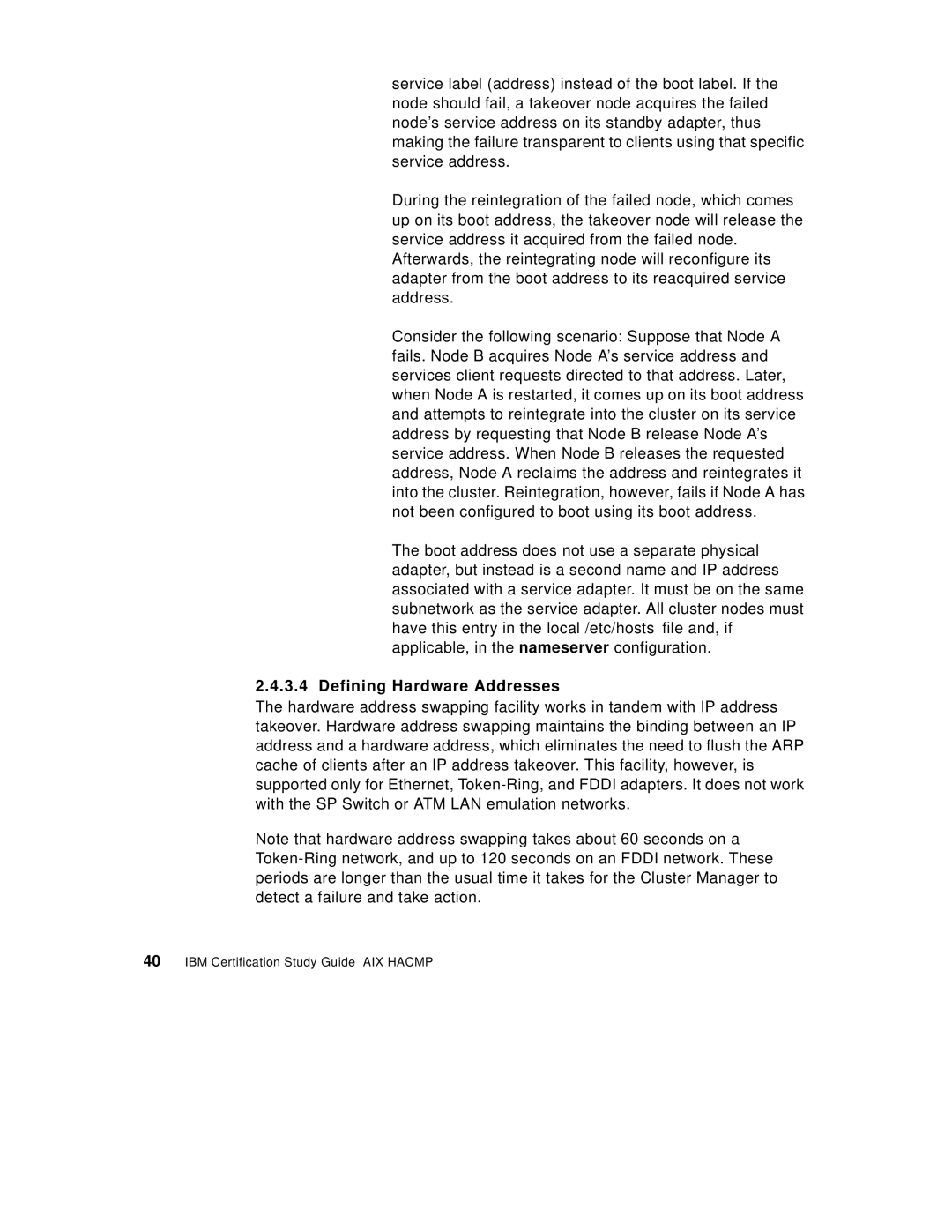service label (address) instead of the boot label. If the node should fail, a takeover node acquires the failed node’s service address on its standby adapter, thus making the failure transparent to clients using that specific service address.
During the reintegration of the failed node, which comes up on its boot address, the takeover node will release the service address it acquired from the failed node. Afterwards, the reintegrating node will reconfigure its adapter from the boot address to its reacquired service address.
Consider the following scenario: Suppose that Node A fails. Node B acquires Node A’s service address and services client requests directed to that address. Later, when Node A is restarted, it comes up on its boot address and attempts to reintegrate into the cluster on its service address by requesting that Node B release Node A’s service address. When Node B releases the requested address, Node A reclaims the address and reintegrates it into the cluster. Reintegration, however, fails if Node A has not been configured to boot using its boot address.
The boot address does not use a separate physical adapter, but instead is a second name and IP address associated with a service adapter. It must be on the same subnetwork as the service adapter. All cluster nodes must have this entry in the local /etc/hosts file and, if applicable, in the nameserver configuration.
2.4.3.4 Defining Hardware Addresses
The hardware address swapping facility works in tandem with IP address takeover. Hardware address swapping maintains the binding between an IP address and a hardware address, which eliminates the need to flush the ARP cache of clients after an IP address takeover. This facility, however, is supported only for Ethernet,
Note that hardware address swapping takes about 60 seconds on a
